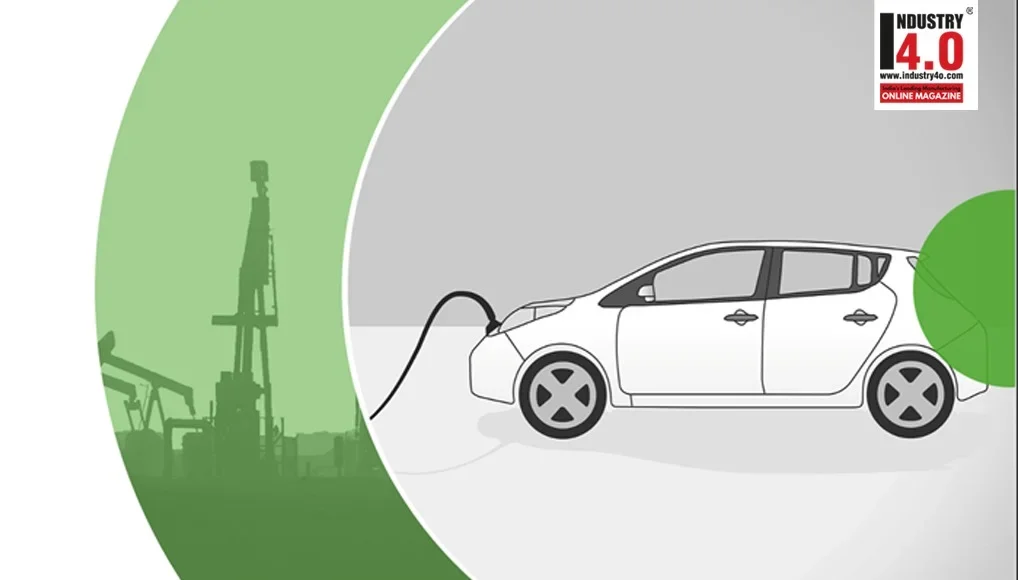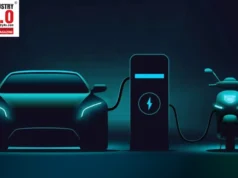Electrification and the Future of the Oil & Gas Industry : Sustainability Considerations
The oil & gas industry is undergoing transformative changes, driven by a combination of market dynamics, technological advancements, and environmental considerations. Here are some key trends currently shaping and expected to further influence the industry:
Digitalization and Data Analytics : This is the era of integration of digital technologies like IIoT( Industrial Internet of Things), artificial intelligence (AI), machine learning (ML), and advanced data analytics-the importance of these technologies is on the increase to enhance efficiency, safety, and productivity by enabling predictive maintenance, optimizing workflows, and improving decision-making processes.
Decarbonization and Clean Energy Transition : Every organization has signed up to NetZero goals resulting in a huge focus on reducing its carbon footprint. This includes investing in renewable energy projects, low-carbon hydrogen, fossil fuels etc. Major oil & gas companies are also exploring opportunities in biofuels, synthetic fuels, and direct air capture technologies.
Electrification and Energy Storage : Consumers are also becoming more conscious of the environment, rising fuel prices and sustainability-electrification is driving a shift towards electric vehicles (EVs), which in turn increases demand for cleaner electricity. Oil & gas companies are positioning themselves to meet this demand by investing in power generation, grid infrastructure, and EV charging facilities. Furthermore, they are involved in developing energy storage solutions to manage the intermittency associated with renewable energy sources.
Sustainability and Circular Economy : There is a growing emphasis on sustainable practices across the value chain. This includes responsible sourcing of raw materials, reducing flaring and methane emissions, and adopting circular economy principles in waste management. Some companies are also exploring biodegradable materials as alternatives to plastics used in drilling and production.
Regional Shifts and Geopolitical Dynamics : The geopolitics of oil & gas is evolving. Regions like the Middle East, traditionally dominant in the industry, are facing increasing competition from U.S. shale, Russian exports, and growing energy independence in some countries. Meanwhile, developing countries in Africa and South America are emerging as new oil & gas frontiers.
Looking ahead, several future trends are likely to further impact the industry:
Increased Automation : With advancements in robotics and automation, the industry anticipates greater use of autonomous machinery and drones for tasks ranging from exploration and production to maintenance and inspection.
Hydrogen Economy : As the world moves towards a low-carbon future, hydrogen is expected to play a pivotal role, particularly in hard-to-decarbonize sectors like heavy industry and long-distance transportation. Oil & gas companies, with their existing infrastructure and expertise in gas handling, are well-positioned to participate in this hydrogen economy.
Growing Focus on ESG : Environmental, Social, and Governance (ESG) criteria are becoming increasingly important for investors, consumers, and regulators. Companies that can demonstrate strong ESG performance are likely to enjoy better access to capital and enhanced reputational benefits.
In conclusion, the oil & gas industry is navigating a period of significant transformation. By embracing digitalization, advancing low-carbon solutions, and focusing on sustainability, the industry can not only adapt to the changing energy landscape but also contribute to a more sustainable future. The successful navigation of these trends will require strategic foresight, significant investment in new technologies, and a commitment to responsible business practices.
Let’s further understand how oil & gas companies are pivoting their strategies – alternate energy sources, responding to current trends and consumer requirements to remain essential.
The industry perspective :
The oil & gas industry, historically a cornerstone of global energy production, faces unprecedented challenges from electrification. The primary driver of this change is the increasing emphasis on reducing greenhouse gas emissions to combat climate change. Governments worldwide are implementing stricter regulations on carbon emissions and are promoting clean energy alternatives, thereby forcing oil & gas companies to adapt or risk becoming obsolete.
One of the key ways the oil & gas industry is responding to these challenges is through diversification. Many oil majors are investing in renewable energy projects, such as wind and solar farms, to expand their energy portfolios beyond fossil fuels. For instance, Shell has invested heavily in offshore wind power, while bp has ventured into biofuels and carbon capture technologies. Such diversification not only helps these companies meet the demands of a changing energy landscape but also positions them to capitalize on new market opportunities.
Another critical response from the oil & gas industry is the development of ‘low-carbon’ hydrogen. Unlike traditional methods of hydrogen production that rely on natural gas and produce carbon emissions, low-carbon hydrogen is produced using renewable energy sources or natural gas with carbon capture technology. It’s seen as a promising solution for hard-to-decarbonize sectors like heavy industry and long-distance transportation, where electrification might not be feasible.
Furthermore, oil & gas companies are leveraging their expertise in infrastructure and logistics to play a pivotal role in the electrification process. They are investing in charging infrastructure for electric vehicles (EVs), power grids, and battery storage solutions. For example, Equinor, the Norwegian oil company, has launched a subsidiary dedicated to developing EV charging infrastructure in Europe.
Despite these efforts, it’s essential to acknowledge that the transition won’t be smooth. The oil & gas industry’s future is uncertain, with potential job losses and economic disruptions in regions heavily reliant on fossil fuel extraction. Therefore, a just transition that supports workers and communities affected by this shift is crucial.
In this article, let’s delve deeper into the electrification trend, the pace at which it is moving, and the debate around pros and cons.
The future of the oil & gas industry lies in its ability to innovate and adapt to the electrification trend. While the industry’s core business may shrink, it can still contribute significantly to the global energy mix through low-carbon technologies and services. Ultimately, the success of this transformation will depend on how effectively oil & gas companies can navigate this period of profound change and how well they align with the broader goals of a sustainable, low-carbon future.
From an emissions standpoint, electrification holds significant promise for reducing carbon footprints. Electricity generated from renewables such as solar and wind is virtually emission-free at the point of use, unlike fossil fuels that emit CO2 during combustion. However, the overall emissions reduction depends largely on how that electricity is produced. If it’s sourced from coal, for instance, the emissions reduction would be less than if it were sourced from renewables. Therefore, a rapid and significant expansion of renewable energy capacity is critical to maximizing the climate benefits of electrification.
On the other hand, the production and disposal of lithium batteries used in electric vehicles (EVs) and energy storage systems present a different set of sustainability challenges. Lithium mining, predominantly done in arid regions, can lead to water scarcity issues and soil degradation. Moreover, the energy-intensive process of lithium extraction contributes to emissions.
Regarding battery disposal, while recycling technologies are improving, current recycling rates remain low, and the process itself involves energy use and potential environmental impacts. The improper disposal of spent batteries can also lead to environmental contamination due to hazardous materials like cobalt and nickel.
The oil & gas industry, with its expertise in handling large-scale infrastructure projects and managing complex supply chains, can play a vital role in addressing these sustainability challenges. Companies can invest in research and development to improve battery efficiency, extend battery life, and enhance recycling technologies. They can also participate in sustainable mining practices, ensuring minimal environmental impact during raw material extraction.
Moreover, the industry can leverage its experience in emissions management to optimize the lifecycle emissions of electricity generation. This could involve investing in cleaner energy sources, carbon capture and storage technologies, and promoting energy efficiency in the manufacturing and usage phases of lithium batteries.
In conclusion, while electrification presents a pathway to reduced greenhouse gas emissions, it is not without its sustainability challenges, especially concerning battery production and disposal. The oil & gas industry, with its vast resources and expertise, has a significant role to play in addressing these challenges. By investing in cleaner battery technologies, more sustainable mining practices, and optimizing the emissions profile of electricity generation, the industry can contribute to a more sustainable future. This transition, however, must be managed carefully to ensure that it results in net environmental benefits.
Consumer perspective: As an early adopter of electric cars, here is my perspective on the EV trend
Environmentally Friendly: One of the most significant advantages of EVs is their reduced environmental impact. Electric cars produce zero tailpipe emissions, contributing less to air pollution and climate change. Moreover, as the electricity grid becomes cleaner with increased renewable energy sources, the overall carbon footprint of EVs continues to decrease.
Lower Operating Costs: Electric vehicles are generally cheaper to run than conventional cars. Electricity is less expensive per mile than gasoline or diesel. Additionally, EVs have fewer moving parts, which means less wear and tear, resulting in lower maintenance costs.
Energy Efficient: Electric motors convert a higher percentage of the electrical energy from the grid to power at the wheels. This results in less energy loss compared to internal combustion engines, which makes EVs more energy-efficient.
Lower Noise Pollution: Electric vehicles operate much quieter than conventional vehicles, which can significantly reduce noise pollution, particularly in urban environments.
Reduced Dependence on Fossil Fuels: By driving an electric car, you’re lessening the demand for oil and contributing to energy security.
Government Incentives: Many governments worldwide offer financial incentives, such as tax credits, rebates, or exemptions from congestion charges, to encourage the adoption of electric vehicles. These incentives can offset the initial purchase price of an EV.
Advanced Technology: EVs often come with cutting-edge features such as regenerative braking, instant torque for quick acceleration, and smartphone app integration for vehicle control and monitoring.
Potential for Vehicle-to-Grid Services: Some advanced EVs can potentially feed electricity back into the grid when parked, providing services like peak load shaving or frequency regulation, which could generate additional revenue for owners.
While electric vehicles offer numerous benefits, it’s important to note that they also have limitations, including range anxiety, longer refueling times compared to conventional vehicles, and the environmental impact of battery production. However, ongoing advancements in battery technology are continually addressing these issues, making EVs an increasingly attractive choice for environmentally conscious consumers.
In conclusion, the benefits of electric vehicles – from their positive environmental impact and cost efficiency to their advanced features and potential grid services – make them an appealing alternative in the evolving landscape of personal mobility.
About the Author :

Ms. Anita Ganesh
Partner – IBM Consulting

As Partner of IBM Services, Ms. Anita Ganesh handles key client portfolio – with responsibilities spanning delivery & team management from the India Client Innovation Center and Global Account Operations Leadership.
Fostering a culture of trust, collaboration and innovation are Ms. Anita Ganesh key focus areas, towards implementing the IBM Services strategic vision for clients-Cognitive Enterprises enabled by the Hybrid Cloud.
An IBM certified Senior Project Manager, Ms. Anita Ganesh have traversed across multiple roles in technical leadership, delivery management, portfolio management, delivery excellence & solutioning in the following organisations :
– L&T Infotech, Powai (1996-2004)
– Infosys (2004-2006)
– IBM India Pvt. Ltd. (2006-till date)
Ms. Anita Ganesh‘s key challenging roles performed:
1. Technical leadership of an end-to-end underwriting application for a large insurance company in UK
2. Leading the Managed Services Transformation of the Non-ERP portfolio for a large oil & gas company
3. Organisation transformation @ IBM – in the areas of Delivery excellence, Project management centre of excellence & transformation, Governance effectiveness, Process, Methods & Tools refinement & standardization for a business unit
Ms. Anita Ganesh is Bestowed with the following Licenses & Certifications :
https://www.linkedin.com/in/an
Ms. Anita Ganesh can be contacted at :











